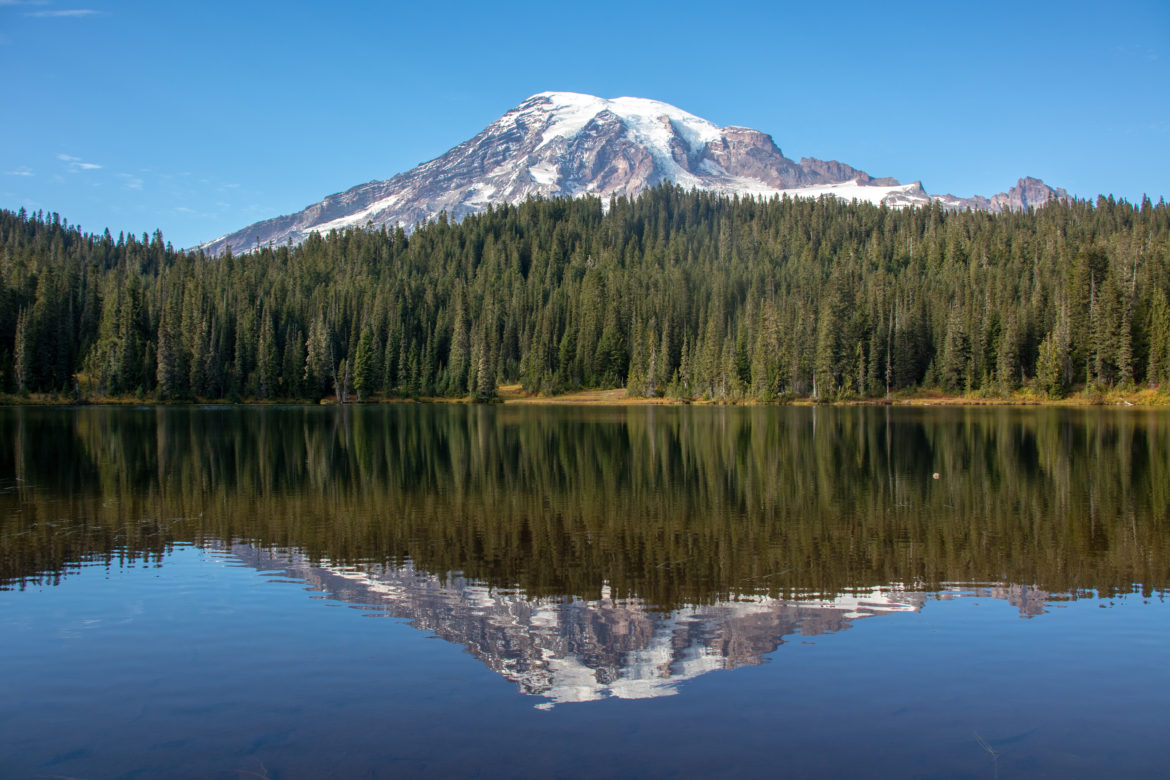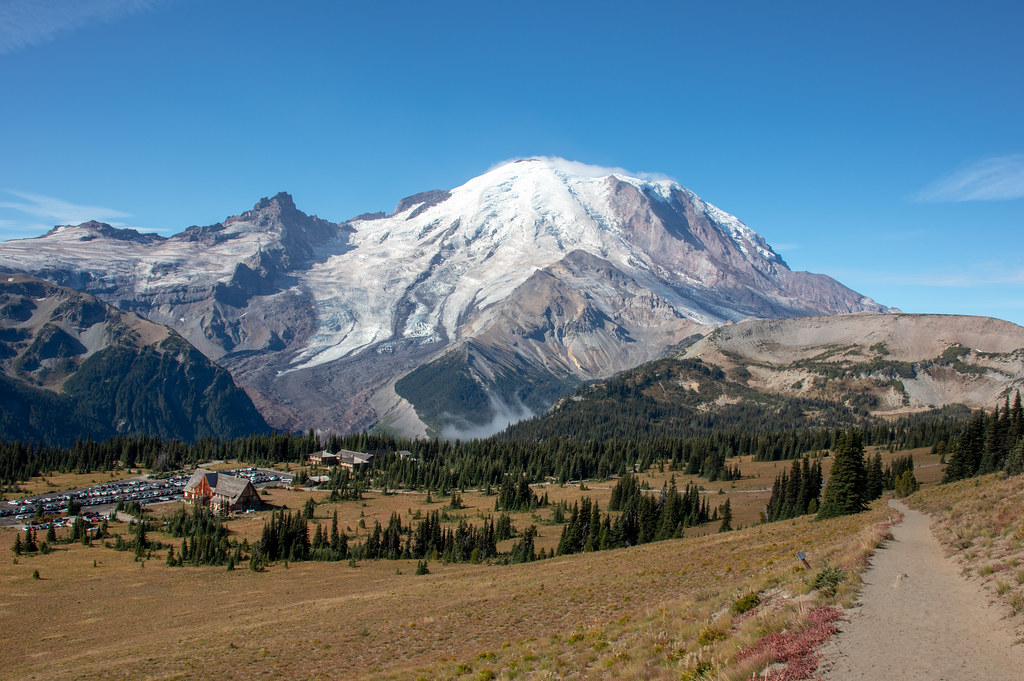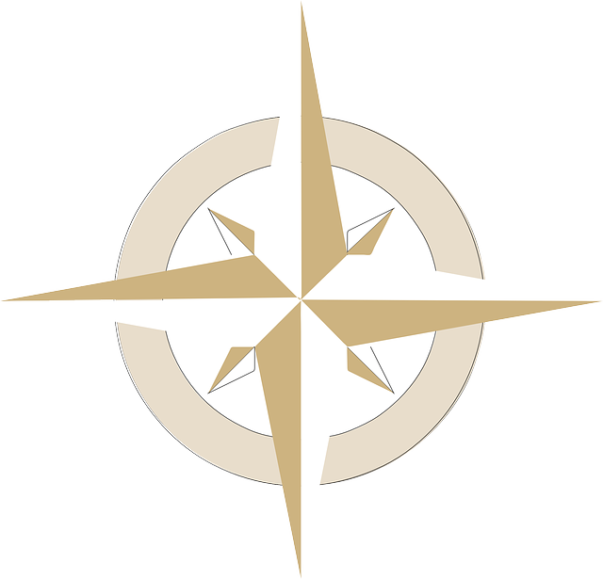The breathtaking wonder of Mount Rainier National Park is truly unique. It’s majestic centerpiece, Mt. Rainier, is the tallest mountain in Washington. And its surroundings include old-growth rainforests, meadows, waterfalls, the Cascade Range and incredible wildlife. From May – October, there is camping and hiking, while the winter it’s a wonderland for snowshoeing and skiing. As a Seattleite, I enjoyed many days here and created this Mount Rainier guide to help others plan for anything from a daytrip to a vacation.
About Mount Rainier
Just 3 hours southeast of Seattle is Mount Rainier National Park. Mount Rainier is an active stratovolcano rising to 14, 410 feet and is the most glaciated peak in the contiguous U.S. with 26 glaciers. Overall, it comprises 369 square miles of natural beauty and was the 5th national park in the U.S. The main attraction, Mt. Rainier is the tallest mountain in Washington and the Cascade Range. Overall, its surrounding valleys are filled with wildflowers, old-growth forests and numerous hiking trails, offering a wonderland for recreational activities. Mount Rainier is also known as Mount Tahoma by the local, Salish people. It’s part of the Pacific Ring of Fire on the Pacific Rim where our planet’s largest volcanoes and earthquakes loom and rumble.
4 Entrances: Mount Rainier National Park
The entrance fees vary according to your visit time. It usually is the most cost-effective to get an annual pass through the America the Beautiful, only costing $80 to cover all the national parks in the U.S.
1) SW Nisqually Entrance: This is a popular route from western WA to the Longmire and Paradise area. Hwy 706 goes to the entrance.
2) NW Carbon River Entrance – This is the gateway to the unique temperate rainforest northwest of Mt. Rainier, Mowich Lake and Tolmie Peak Hiking Trail.
3) SE Stevens Canyon Entrance – This entry via Hwy 123 takes you into the heart of the old growth forests in the Ohanapecosh area. Then, it goes to Steven Canyon Road and Paradise.
4) NE White River Entrance – Gateway to the Sunrise area
5 Sections to the Park
1) Paradise
Paradise more than lives up to its name. And if you only have one day at the park, this is the place to go. At 5,400 ft. it’s a gateway to the southern side of majestic Mt. Rainier, showcasing meadows and glaciers during summer months. Paradise is open year-round, with snow that doesn’t melt until end of June. It’s the ultimate paradise to hike in the summer and snowshoe/ski in the winter. Henry M. Jackson Memorial Visitor Center offers educational displays and literature to learn about the geology, flora and fauna of the region.
2) Sunrise
On the northeast side of the park is the Sunrise Visitor Center at an elevation of 6,400 ft. The road to Sunrise is only open July through end of September. The views of Mt Rainier from here are some of the most dramatic in the park, with the massive Emmons Glacier and vibrant meadows with wildflowers. Being on the northeast side, there is a rain-shadow affect and the area is the first to catch the morning light. Like Paradise, Sunrise has an educational visitors center, however, no lodging. Furthermore, there is a walk-in campground (1 mile) from the visitor’s center, and the hiking trails of Sunrise are some of the most scenic in the park
3) Longmire
Being at 2,700 feet, Longmire is open year-round and offers fantastic early / late season hiking trails. Even more, many trails are wonderful in the winter for cross-country skiing and snowshoeing. The Rampart Ridge Trail takes you through old-growth forest to a 4,000-ft ridgeline for amazing views. Also, the Trail of the Shadows is a .7-mile family-friendly loop hike to the old resort site, mineral springs and historic cabin. The Longmire Museum is a great place to discover the history of the area.
4) Ohanapecosh
On the southeast corner of the park at a lower elevation of the park at 1,900 feet, this area is known for its lush, old-growth forests. The Ohanapecosh Campground opens earlier and stays open later than Cougar Rock due to its lower elevation. The incredible Grove of the Patriarchs is here, an easy and popular 1-mile hiking trail.
5) Carbon River and Mowich
On the northwest side of Mt. Rainier is a unique ecosystem of inland primeval, temperate rainforest. The Carbon Glacier lies at the lowest elevation in the Lower 48. Lake Mowich is the largest and deepest lake at the park. There are many hiking and mountain biking trails nearby, such as, the popular Tolmie Peak Trail.
When to Go – Mount Rainier National Park
Timing is everything when visiting Mt. Rainier National Park. The summer crowds are daunting, so arrive before 9 am, especially on weekends, to find parking. I always plan to go on a weekday and get there by 8 am during July – August.
Related: CAMPING AND HIKING TIPS FOR MT. RAINIER NATIONAL PARK IN SPRING
Longmire and Paradise are both open year-round for hiking, snowshoeing and cross-country skiing. However, the snow doesn’t melt at Paradise until end of June for hiking. The Sunrise area is only open from July – October because of its higher elevation. The best times to go are summertime from July to August for wildflower season and in September for the stunning Autumn colors.
During June, hiking opens up at Carter Falls along the Nisqually River, Grove of the Patriarchs Trail and visitors hike on the snow at Paradise to Panoramic Point (some ski down).
Accommodations Inside & Near the Park
Four Auto-campgrounds within park:
Cougar Rock and Ohanapecosh Campground are the only two available for advance reservations at Recreation.gov – White River and Mowich Lake campsites are only available on a first-come, first-serve basis. Two vehicles are permitted at each individual site at any campground within the park.
Cougar Rock Campground (May-Sept) – This is a super convenient location on the southwest side of Mt. Rainier near Paradise. At 3,180 ft it is within walking distance to the Nisqually River and Carter Falls hiking trail.
Ohanapecosh Campground (May – Sept) – This campground is surrounded by old-growth forests and is at 1,914 ft. It also is near hiking trails at Silver Falls and Grove of the Patriarchs.
White River Campground (June – Sept) – On the northeast side of Mt. Rainier this campground is just 12 miles from Sunrise area. Its elevation is 4,400 ft and located near fabulous hiking. (If this campground is full, Silver Springs Campground nearby is another option.)
Mowich Campground (July – Oct.) On the northwest side of Mt. Rainier, this campground is near Lake Mowich, the largest and deepest lake at the park. There are many hiking and mountain biking trails nearby, such as, the popular Tolmie Peak Trail.
There is also backcountry camping in Mt. Rainier that requires a permit. Sunrise Camp is a great introduction to this, as it’s less than a mile hike from the visitor center.
Lodges / Motels:
Paradise Inn (May – Oct.): Walking distance from the Paradise Visitor Center is the historic Paradise Inn, originally built in 1916. This rustic lodge is made out of cedar logs and listed on the National Register of Historic Places. It’s the ultimate accommodation at the park with extraordinary views of Mt. Rainier and immediate access to hiking trails and wildlife.
National Park Inn (open year-round) – In the historic Longmire area, this landmark inn is a convenient location close to the southwest entrance and Paradise area. There are many hikes nearby and fantastic views of Mt. Rainier from the traditional porch.
Also, to save some money there are great places just outside the entrance, especially near Ashford, such as, Whittaker’s Bunkhouse, Stormking Cabins and Spa, Wellspring Spa & Resort and Nisqually Lodge. Here’s a link of places to stay near Ashford: Mt. Rainier Visitor Association
Top 10 Things to Do – Mount Rainier Guide
Related: Ten Best Things to Do at Mount Rainier National Park
Paradise Area – Open all year-round, with amazing hiking trails (Skyline Loop Trail), Myrtle Falls, Henry M. Jackson Memorial Visitor Center and Paradise Inn
Sunrise Area – Open July – Oct, with awesome hiking trails (Mt. Fremont Lookout Trail and Burroughs Mountain Trail), visitor center and Sunrise Camp, just a 1-mile walk for a great introduction to background camping.
Photo-op Walk at Reflection Lakes – These picture-perfect lakes along Steve Canyon’s Road reflect the south side of Mt. Rainier, making for an iconic photo. This is accessible roadside or through hiking/snowshoeing from Paradise or Narada Falls.
The Best Photo-ops at Mount Rainier National Park include Reflection Lake (above), Fremont Lookout Trail, Summerland Trail, Skyline Trail / Myrtle Falls and Naches Peak Loop Trail.
Chase Waterfalls near Paradise – There is a cluster of breathtaking waterfalls near Paradise and within close driving distance: Myrtle Falls (Skyline Trail at Paradise); Narada Falls, Christine Falls, and Falls Creek Falls are all along Steve Canyons Road.
Grove of the Patriarchs – This is an easy 1-mile hiking trail. The path goes through ancient, old-growth forests and over Ohanapecosh River on a suspension bridge to an island. This primeval island lies preserved from fires sustaining tree giants, such as, Douglas firs, cedars and hemlocks.
Longmire Area – Open year-round and offers fantastic early / late season hiking and snowshoeing. The Longmire Museum is a great place to discover the history of the area.
Take a hike – The best way to see Mt. Rainier up close and personal is through hiking. Mount Rainier National Park maintains more than 260 miles of hiking trails. Five top hikes at Mt Rainier are the following: Skyline Loop Trail (6.2 mi/Moderate – Hard); Summerland to Panhandle Gap Trail (8.5 mi/Moderate – Hard); Mt Fremont Lookout Trail (5.7 mi/Moderate); Naches Loop Trail (3.3 mi/Easy) and Wonderland Loop Trail (96.2 mi).
Related: Top 10 Spectacular Hiking Trails at Mt Rainier National Park
Mowich Lake / Tolmie Peak – This northwest region of the park is uniquely an inland temperate rainforest. There are amazing opportunities for recreational activities here, such as, hiking, camping and mountain biking. Mowich Lake is the deepest and largest lake inside the park near Mowich Campground. One of the best hikes in this area is the Tolmie Peak Lookout Trail (7.5 mi/moderate).
Crystal Mountain Resort Gondola Ride – This year-round attraction is a world class destination for skiing, hiking and scenery. During winter months the gondola is available for anyone, even if you’re not skiing. During summer, the gondola opens mid-June. The gondola ride takes you 2,400 ft to the summit, where you can wander and take in 360-degree views of Mt Rainier and the Cascade Range.
Chinook Scenic Byway – As one of the most scenic drives in Washington, it is at an elevation of approx. 4,5000 ft. The road starts in Enumclaw and ends in Naches / Tipsoo Lake. Furthermore, Naches Loop Trail (3 mi) is a popular, family-friendly hike that is easy with incredible wildflowers and views. The Chinook Pass (5,430 ft) is located 3 miles east of Cayuse Pass on SR 410.
1, 2, 3, 4 & 5-Day Itinerary Suggestions
1-day Itinerary at Paradise – Arrive early by 8 am at the Paradise Visitor Center. Pick up some hiking maps or wildflower guides from the friendly rangers. Take a hike on the Skyline Trail (5.4 miles/moderate) with views of the Nisqually Glacier on Mt. Rainier, and even Mt. St. Helens and Mt. Adams from Panoramic Point. Then finish the hike by walking along the meadows and Myrtle Falls.
Less than 15 minutes from Paradise, take the road south to Narada Falls then nearby Reflection Lakes for sunset. These lakes display one of the best photo ops in the park with the iconic reflection of the southern slopes of Mt. Rainier mirrored crystal clear, if the weather is calm and mostly clear.
2-Day Itinerary – Paradise (above) and Sunrise Area – Arrive by 8 am at the Sunrise parking lot. The Sunrise area has a visitor center and offers numerous hiking trails from which to choose. Fremont Lookout Trail is one of the most popular in the park for epic views of Mt. Rainier and the Cascades. At the visitors center you can get maps for hiking trails and ask questions for the rangers.
3-Day Itinerary – 2-Day Itinerary plus the Ohanapecosh area including the Grove of the Patriarchs Trail, an easy 1-mile hike. The ancient, old-growth path takes you over Ohanapecosh River on a suspension bridge to an island. This primeval island lies preserved from fires sustaining tree giants, such as, Douglas firs, cedars and hemlocks. Nearby is the Ohanapecosh Visitor Center and the Silver Falls Trail, a 4-mile moderate hike.
Best Tip for Planning: Whenever possible, especially in summer, plan itineraries for weekdays and arrival before 9 am to avoid crowds.
4-Day Itinerary – 3-Day Itinerary + Mowich area. This northwest region of the park is an inland temperate rainforest. There are amazing opportunities for recreational activities here, such as, hiking, camping and mountain biking. Mowich Lake is the deepest and largest lake inside the park near Mowich Campground and a great place for a swim. Don’t miss one of the best hikes in this area: the Tolmie Peak Lookout Trail (7.5 mi/Moderate).
5-Day Itinerary – 4-Day Itinerary + Longmire Area. Being at 2,700 feet, Longmire is open year round and offers fantastic early / late season hiking trails. Even more, many trails are wonderful in the winter for cross-country skiing and snowshoeing. The Rampart Ridge Trail takes you through old-growth forest to a 4,000-ft ridgeline for amazing views. Also, the Trail of the Shadows is a .7-mile family-friendly loop hike to the old resort site, mineral springs and historic cabin. The Longmire Museum is a great place to discover the history of the area.
Wildlife and Wildflowers
Mt. Rainier National Park is a haven for wildlife and nature lovers. I have gotten within 12 feet of both a white mountain goat at Sunrise and black-tail Buck at Paradise. On almost any hike you are guaranteed to see marmots. I actually saw a family of 7 near their mound to underground tunnel while hiking at Skyline at Paradise. Overall, there are common sightings of black bear, marmots, elk, deer, pika (related to rabbits), foxes and chipmunks.
The wildflower season at Mt. Rainier National Park is fantastic July – August. Some of the best hiking trails for seeing wildflowers are the following: Skyline Loop, Grand Park, Naches Loop, and Berkeley Park from Sunrise. Beautiful swaths of wildflowers and meadows are seen, such as, magenta paintbrush, avalanche lily, lupine, lousewort, flox, arnica, bistort, rosy spirea, gentian, western anemone, monkey flowers, asters and bear grass.
Read More!
20 Amazing Must-Do Hiking Trails in Washington State
Washington State Travel Guides














1 comment
Hi all! This is a good site.